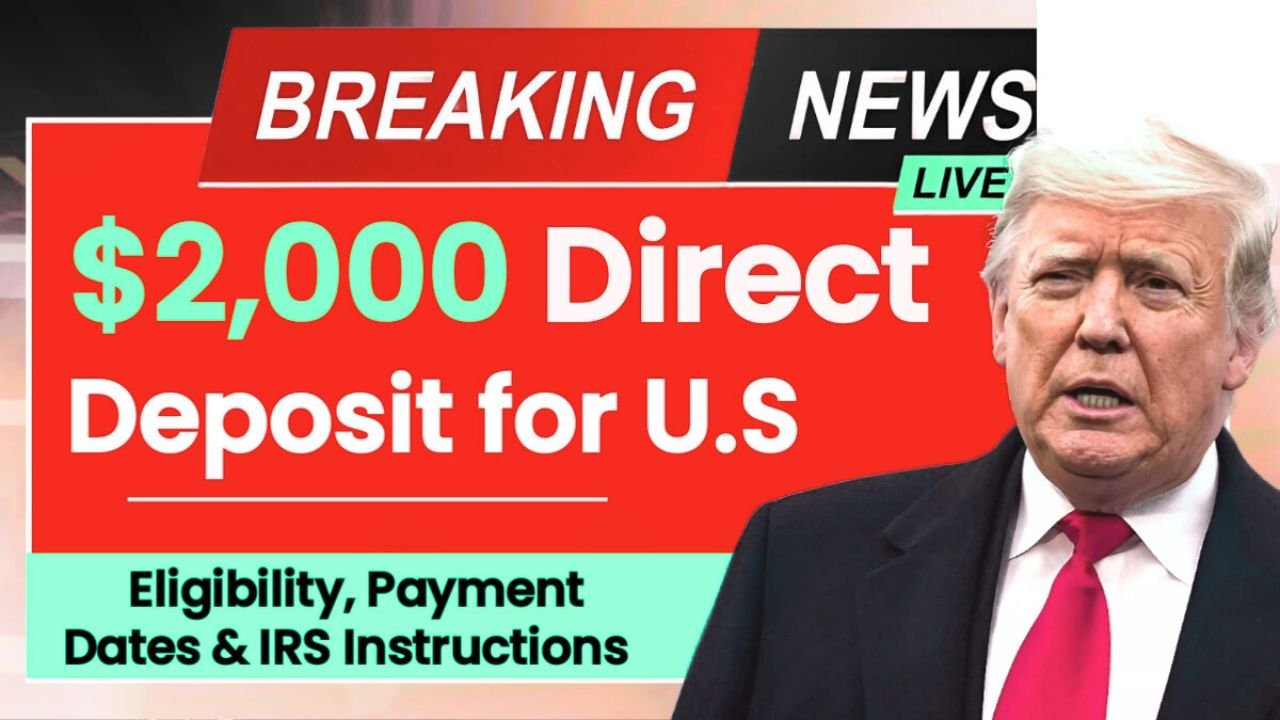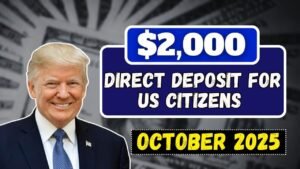Millions of Americans are about to get a welcome boost this fall. The federal government has announced a $2,000 direct deposit payment in October 2025, aimed at easing financial pressure caused by inflation and rising living costs.
This relief initiative targets low- and middle-income families, retirees, and veterans, offering a timely lifeline as expenses for essentials like groceries, housing, and healthcare continue to rise.
Why the $2,000 Direct Deposit Matters
The cost of living in the U.S. has climbed sharply in recent years. For many households, it’s becoming harder to cover everyday expenses.
The $2,000 stimulus-style payment is designed to provide financial stability and support local economies by helping Americans spend more on essential needs.
Key Goals of the Program:
- Ease the burden of inflation on families and seniors
- Support low- and middle-income households
- Stimulate local economies through consumer spending
Who Qualifies for the $2,000 Direct Deposit
The IRS and Social Security Administration (SSA) will oversee the automatic distribution of payments. Eligibility is primarily based on income and tax filing status.
Eligibility Overview:
- U.S. citizens and permanent residents
- Individuals who filed a 2024 tax return
- Social Security, SSI, and VA benefit recipients
Income Limits for Full Payment:
| Filing Status | Maximum AGI for Full $2,000 |
|---|---|
| Single | $75,000 or less |
| Head of Household | $112,500 or less |
| Married (Joint) | $150,000 or less |
Those earning above these limits may receive a reduced payment, which phases out gradually.
Automatic Payments for Seniors & Veterans
You don’t need to apply if you already receive:
- Social Security (SSA) benefits
- Supplemental Security Income (SSI)
- Veterans Affairs (VA) benefits
Payments will be sent directly to your usual deposit account, ensuring seniors and disabled veterans receive funds without extra steps.
$2,000 Payment Dates – October 2025 Schedule
According to the IRS and Treasury timeline:
| Group | Payment Type | Estimated Date |
|---|---|---|
| Tax filers (direct deposit) | Direct Deposit | Oct 15, 2025 |
| SSA & SSI beneficiaries | Direct Deposit | Oct 22, 2025 |
| Veterans & RRB recipients | Direct Deposit | Oct 25, 2025 |
| Paper checks/debit cards | Oct 28 – Nov 5, 2025 |
Tip: Direct deposit is the fastest and safest way to receive funds.
How to Ensure You Receive the Payment
Follow these steps to avoid delays:
- File your 2024 tax return (the IRS uses it to confirm eligibility)
- Update your banking info on your IRS account if you’ve changed banks
- Use the IRS Non-Filer Tool if you don’t normally file taxes
- Track your payment through the IRS “Get My Payment” portal (once active)
Beware of Scams and Fraud
The IRS warns citizens to stay alert for fake messages or websites claiming to offer early access to payments.
- The IRS will never contact you by phone, text, or email to verify bank details.
- Always check updates on IRS.gov or SSA.gov only.
Tax Impact of the $2,000 Payment
The $2,000 relief payment:
- Is not taxable
- Does not affect Social Security or unemployment benefits
- Will not reduce SNAP, Medicaid, or other assistance
This ensures recipients get the full benefit without deductions.
FAQs – $2,000 Direct Deposit October 2025
1. Do I need to apply for the $2,000 payment?
No. If you’re eligible based on tax or benefit records, you’ll receive it automatically.
2. When will the $2,000 deposit arrive?
Most direct deposits start from October 15, 2025, with mailed checks arriving by early November.
3. Is this payment a new stimulus check?
It’s part of a broader federal relief effort, not a pandemic stimulus, focused on helping Americans manage rising costs.
4. What if I didn’t file taxes in 2024?
Use the IRS Non-Filer Tool to register your details and avoid missing out.
5. Will this payment reduce my Social Security or SSI benefits?
No, it will not affect your benefits or be counted as income.
Final Thoughts
The $2,000 direct deposit in October 2025 is a meaningful step toward financial relief for millions of Americans. With inflation still impacting daily life, this payment aims to restore balance and stability for families, seniors, and veterans.
This relief isn’t just a deposit — it’s a sign of hope and support during challenging times.



